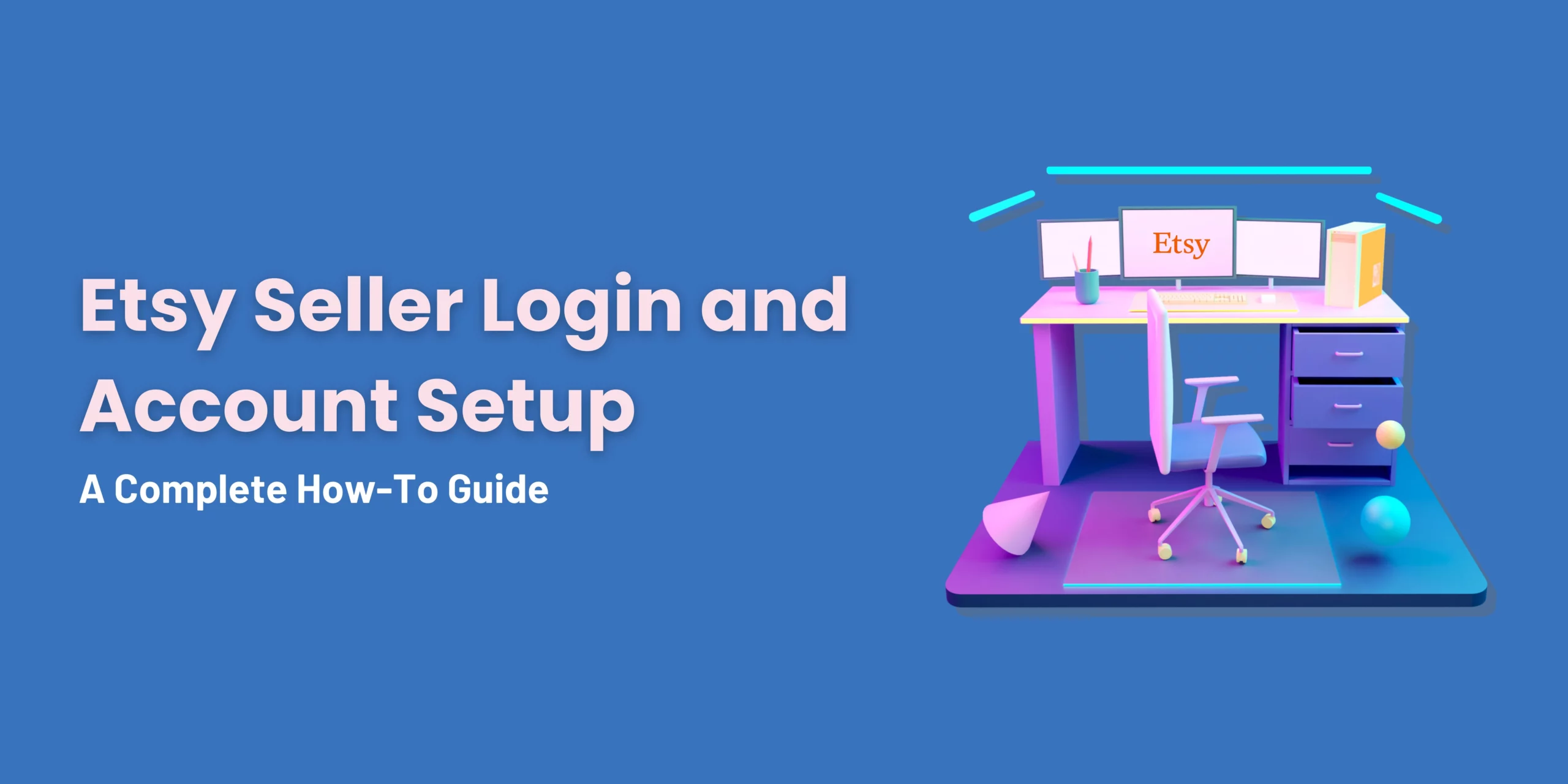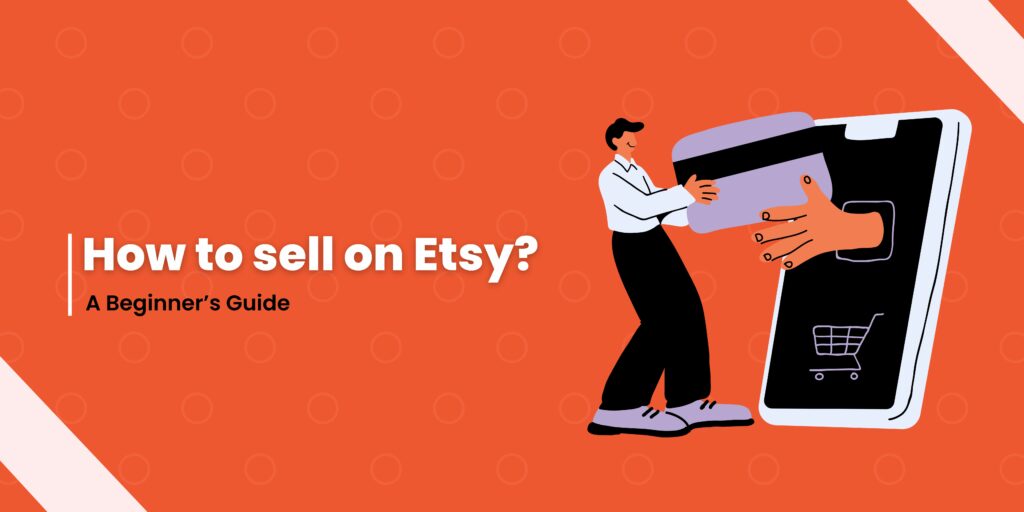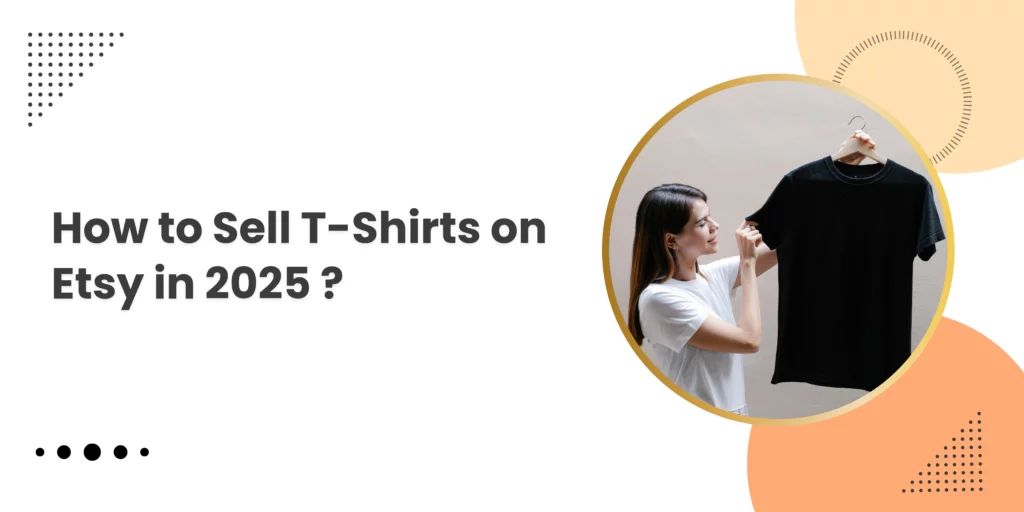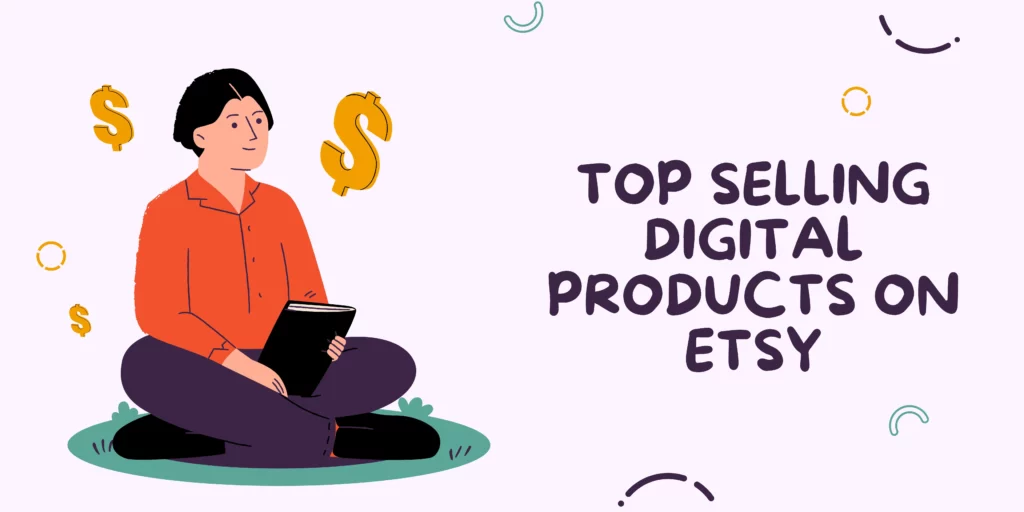| Table of Contents |
Etsy has become a go-to platform for creative entrepreneurs looking to sell their handmade goods, vintage items, and digital products. With its vast and engaged community of buyers, it offers a great opportunity to turn your passion into profit. Whether you’re new to selling online or looking to expand your business, Etsy makes it easy to set up and reach millions of shoppers worldwide.
In fact, Etsy’s popularity keeps growing—around 9 million sellers were active on the platform in 2023, up from 7.5 million in the previous year (According to Statista). This guide will walk you through the Etsy seller login and account setup, Etsy fees, and how to optimize your seller profile to make the most out of your shop. Ready to get started? Let’s go!
Why should you sell on Etsy?
Selling on Etsy offers numerous advantages that make it a preferred choice for many entrepreneurs. Here are a few key reasons why you should consider opening your own Etsy shop:
- Large Audience: Etsy attracts millions of shoppers looking specifically for unique and handmade items. This diverse customer base allows you to showcase your products to potential buyers who appreciate creativity and craftsmanship.
- User-Friendly Platform: Setting up your shop on Etsy is straightforward, even for beginners. The intuitive interface guides you through each step, making it easier to start selling without needing extensive technical knowledge.
- Creative Freedom: Etsy provides a platform for you to express your creativity and share your passion with the world. Whether you create custom jewelry, original artwork, or vintage finds, you have the flexibility to showcase your unique style.
- Community Support: Etsy has a vibrant community of sellers and buyers. You can connect with other entrepreneurs for support, advice, and inspiration, which can be incredibly valuable as you grow your business.
- Marketing Tools: Etsy offers useful marketing` features like promoted listings and social media integration to help you reach a wider audience effortlessly. You can boost visibility for your products with Etsy Ads. Additionally, tools like Outfy can automate the promotion of your items across social media platforms, maximizing your reach and engagement with potential customers.
- Low Startup Costs: Starting an Etsy shop is relatively inexpensive compared to other business ventures. With low listing fees and no monthly charges, you can begin selling with minimal upfront investment.
With these benefits, it’s no wonder that Etsy has become a popular platform for creative entrepreneurs. Whether you’re looking to sell a few items or build a full-fledged business, Etsy provides the tools and resources to help you succeed. Now, let’s dive into how to create your Etsy seller account and get your shop up and running!
How to Create an Etsy Seller Account?
Creating your Etsy seller account is the first step toward sharing your unique products with the world. Here’s a simple guide to get you started:
Step 1: Create Your Etsy Seller Account
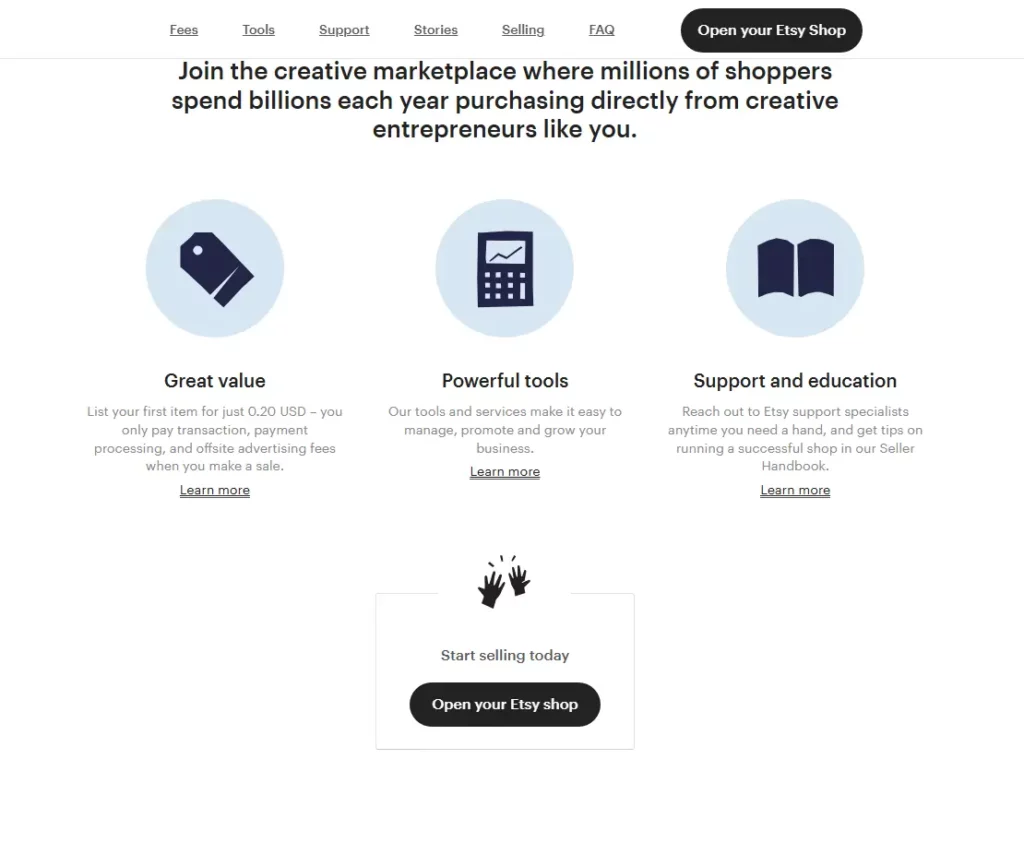
- Start by navigating t0 Etsy.com and scrolling to the bottom of the page.
- Select the link that says “Sell on Etsy.”
- Click on “Open your Etsy shop.”
- Provide your business email address and click “Continue.”
- Fill in your first name, create a password, and click “Register” to establish your Etsy seller account.
- Check your email for a confirmation link from Etsy, and click it to verify your account.
Step 2: Set Your Shop Preferences
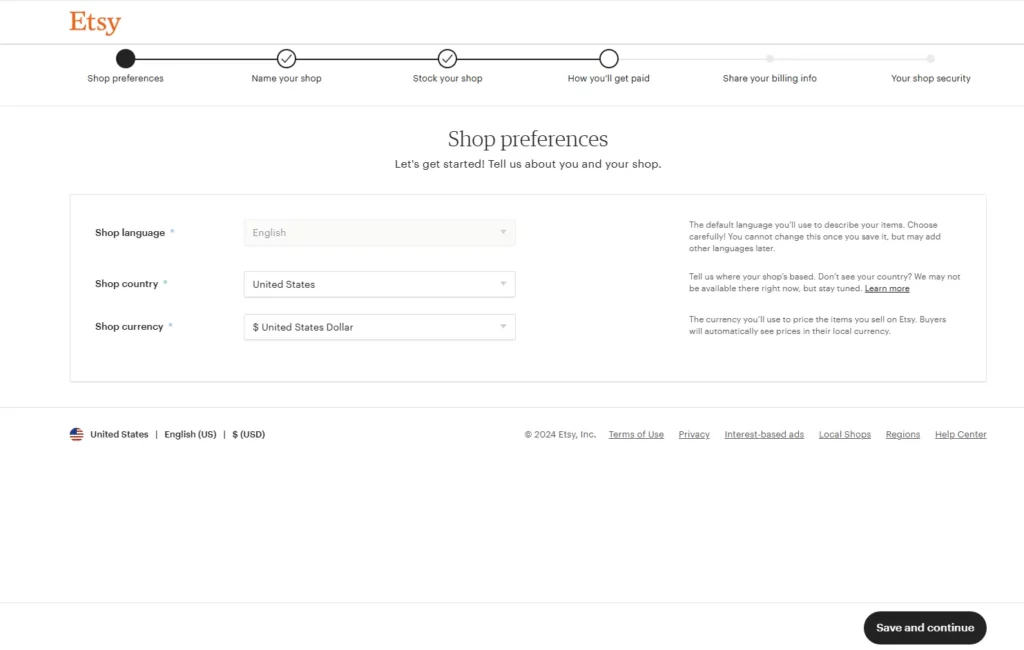
- Go to the shop manager.
- Select your shop’s language, country, and currency.
Step 3: Pick a Shop Name
- Your shop name should be special and between 4-20 characters.
- Once you pick a name, click “Save and continue.”
Step 4: Create Your Listings
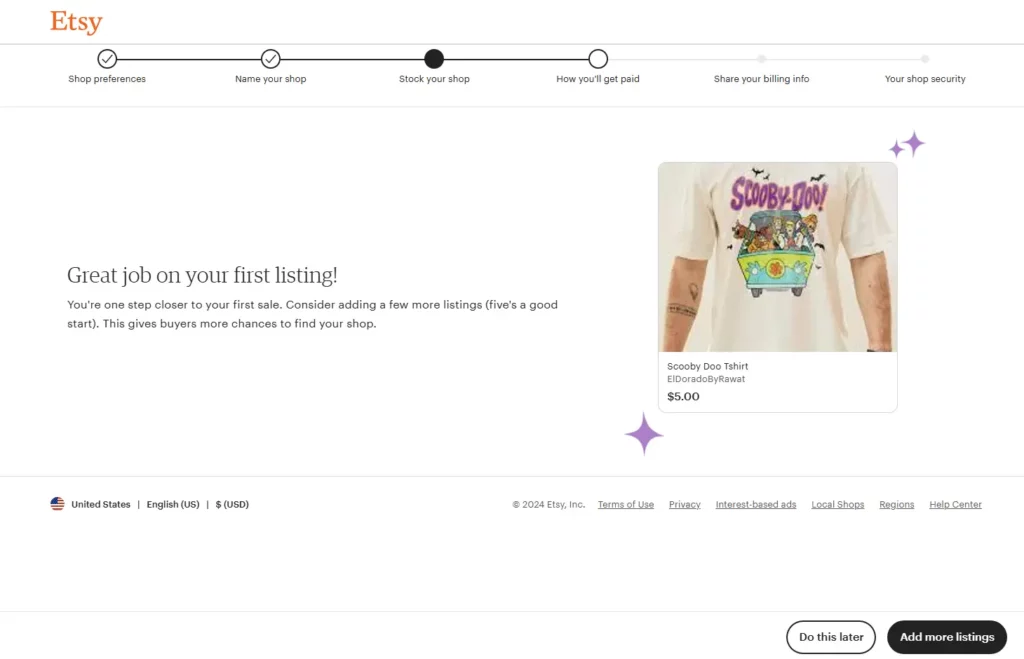
- You’ll need at least one listing to proceed. Click “Add a listing.”
- Follow the prompts to add photos, descriptions, categories, and prices for your product.
- Decide on shipping details or consider offering free shipping.
- After saving, you can add more listings or move on.
Step 5: Provide Your Details and Payment Info
- Choose your business type and fill out your personal details.
- Provide your bank details for payments.
- Click “Save and continue.”
Step 6: Set Up Billing Information
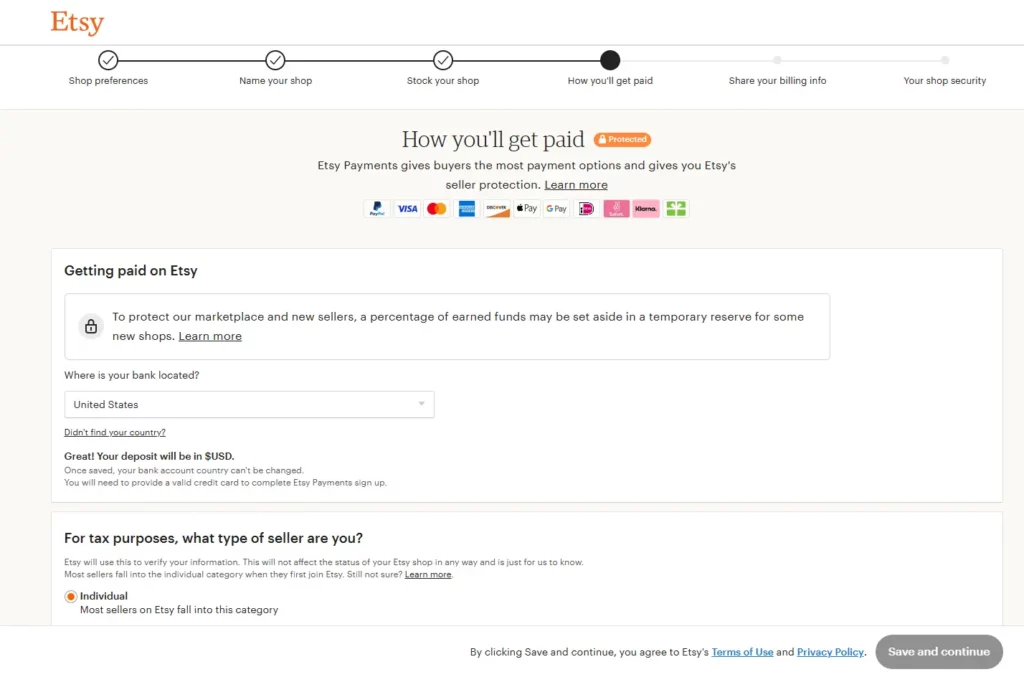
- Enter your credit card info for billing. Etsy will charge listing fees to this card monthly.
- Click “Open your shop” to finalize everything.
Step 7: Verify Your Bank Account
- Etsy will deposit a small amount into your bank account for verification.
- Complete the verification by following the given instructions.
Step 8: Access Your Shop Manager
- Use your Etsy seller login to access the shop manager.
- From here, you can oversee listings, chat with customers, track orders, and more.
Etsy Fees
Understanding Etsy fees is crucial for managing your business effectively. While selling on Etsy provides access to a vast audience, it’s essential to know the costs involved to ensure your pricing covers these fees and helps you make a profit. Here’s a breakdown of the main fees you should be aware of:
1. Listing Fees
Every time you list a new item in your shop, Etsy charges a listing fee of $0.20. This fee applies to each product you list and is charged regardless of whether the item sells. If an item doesn’t sell and you decide to renew the listing after it expires, you’ll be charged another listing fee.
2. Transaction Fees
When you make a sale, Etsy takes a transaction fee of 6.5% on the total selling price, which includes the item price plus shipping costs. This fee is taken out of your earnings, so factor this into your pricing strategy.
3. Payment Processing Fees
Etsy also charges payment processing fees, which vary based on the country you’re selling from and the payment method used. Generally, this fee is a percentage of the sale plus a fixed amount. For example, in the U.S., the fee is typically around 3% + $0.25 for each transaction.
4. Offsite Ads Fees
If you choose to use Etsy’s Offsite Ads feature, which promotes your listings on other platforms, you’ll incur additional fees only when a sale results from these ads. The fee is 15% if your shop earns less than $10,000 in a year, or 12% if your shop exceeds that amount.
5. Etsy Ads Fees
If you use Etsy Ads to promote your listings within the Etsy platform, you’ll set a daily budget, and Etsy will charge you based on clicks your ads receive. The costs vary based on your budget and the competition for ad space.
6. Currency Conversion Fees
If you sell internationally, Etsy may apply a currency conversion fee of around 2.5% when processing payments in a different currency than your shop’s currency.
Key Takeaway
Etsy fees can add up, so it’s essential to understand them and incorporate them into your pricing strategy. By being aware of these costs, you can better manage your profits and ensure your shop remains financially viable. Now that you know about the fees, let’s discuss how to optimize your seller profile for success!
Optimizing Your Seller Profile
Now that you have your Etsy seller account set up and understand the fees involved, it’s time to focus on optimizing your seller profile. A well-crafted profile can help build trust with potential customers and make your shop stand out. Here are some tips to enhance your Etsy seller profile:
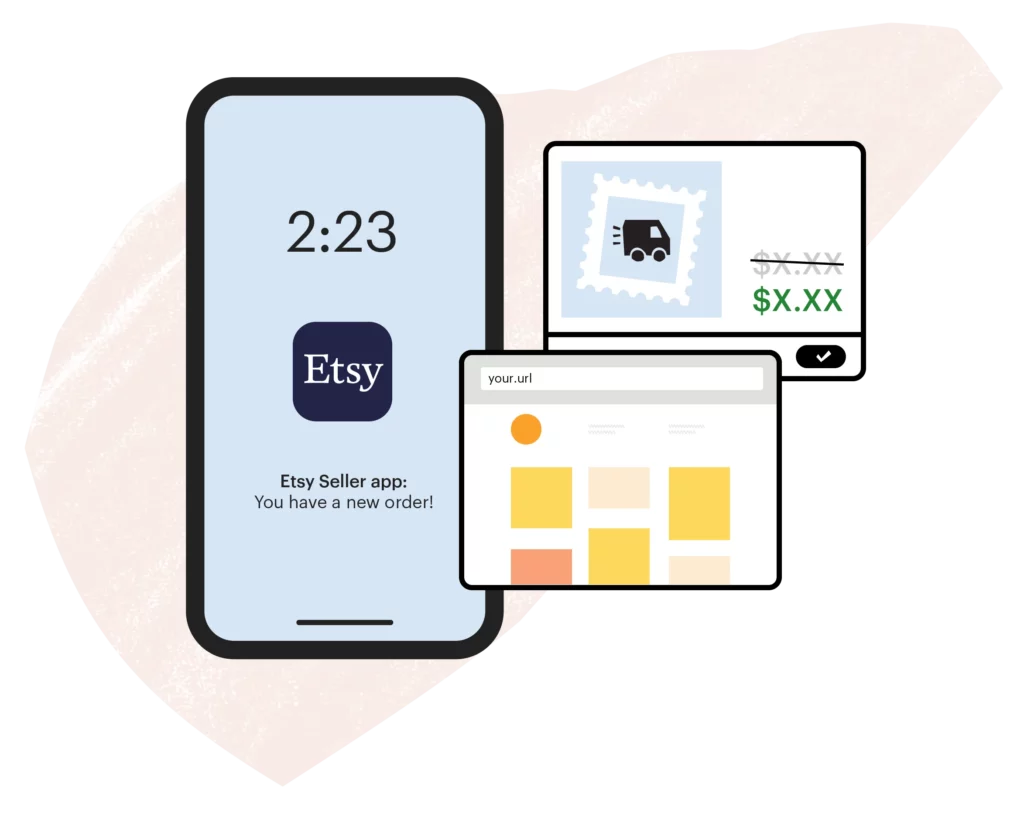
1. Create an Engaging Shop Announcement
Your shop announcement is the first thing visitors see, so make it count! Use this space to introduce yourself, share your story, and highlight what makes your products unique. Keep it friendly and inviting, as this can create a connection with potential buyers.
2. Write a Compelling “About” Section
Take advantage of the “About” section to share your journey as an artist or maker. Include details about your creative process, inspiration, and what drives you. Adding personal touches can help customers relate to you and your work.
3. Use High-Quality Images
Images are vital for attracting buyers. Use high-resolution photos that showcase your products from multiple angles. Include lifestyle shots to show your items in use, helping customers envision how they’ll fit into their lives.
4. Choose Your Shop Policies Wisely
Clearly outline your shop policies regarding shipping, returns, and exchanges. Being transparent about your policies helps manage customer expectations and builds trust. Make sure to keep your policies easy to understand.
5. Include Relevant Keywords
Optimize your shop profile and listings with relevant keywords that potential customers might use to search for products like yours. This can improve your visibility on Etsy’s search results and help more people find your shop.
6. Use Customer Reviews
Encourage satisfied customers to leave reviews. Social proof is powerful; potential buyers are more likely to trust a seller with good reviews. Respond to reviews, thanking customers for their feedback and addressing any concerns professionally.
7. Promote Your Shop Externally
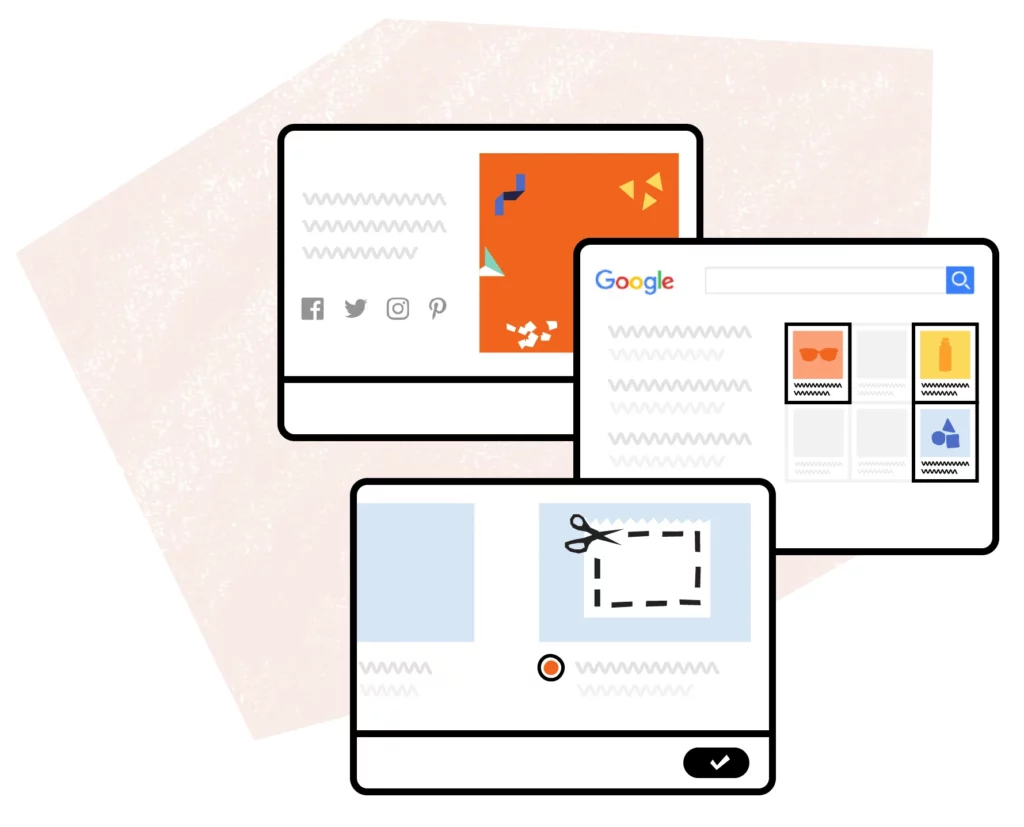
Don’t rely solely on Etsy to drive traffic to your shop. Use social media platforms like Instagram, Pinterest, and Facebook to showcase your products and connect with a broader audience. Share behind-the-scenes content, customer testimonials, and special promotions to engage your followers.
outfy
AI-Powered Social Media Marketing
for Online Stores
Outfy automatically creates, schedules and posts viral content like
Reels, Stories, Collages, Videos, Promotions from your products on Social Media.
Final Thoughts
As you start your Etsy journey, remember to stay updated on Etsy’s policies and best practices. Success takes time, so be patient and focus on building relationships with your customers. Engage with potential buyers through social media and respond quickly to messages and reviews.
Experiment with new strategies based on feedback, and use Etsy’s marketing tools, like Etsy Ads, to increase visibility. Consider leveraging Outfy for automating your marketing on social media. With creativity and persistence, you can build a thriving Etsy shop that showcases your unique products. Happy selling!
FAQ: Selling on Etsy
1. What do you need for an Etsy seller account?
To set up an Etsy seller account, you’ll need:
- An Etsy Account: If you don’t already have one, you’ll need to create a personal account.
- Bank Information: You’ll need to provide your bank details to receive payments.
- Credit Card Information: This is necessary for billing purposes, like listing fees.
- Shop Name: Choose a unique name for your shop that reflects your brand.
2. How do I log into Etsy as a seller?
To log into Etsy as a seller:
- Go to Etsy.com.
- Click on “Sign in” at the top right corner of the homepage.
- Enter your email and password associated with your account.
- Once logged in, access your seller dashboard by clicking on “Shop Manager” to manage your listings, orders, and more.
3. How to sell on Etsy for beginners?
If you’re just starting on Etsy, here are some simple steps:
- Set Up Your Shop: Follow the steps to create your seller account and pick a shop name.
- Create Listings: Add products with clear photos, engaging descriptions, and prices.
- Promote Your Shop: Share your listings on social media and consider using Etsy’s advertising options.
- Engage with Customers: Respond to messages and encourage reviews to build your reputation.
4. How much does it cost to sell on Etsy?
Selling on Etsy comes with several fees:
- Listing Fee: $0.20 per item you list.
- Transaction Fee: 6.5% of the total selling price (including shipping) for each sale.
- Payment Processing Fee: This varies, typically around 3% plus a fixed fee per transaction.
- Advertising Fees: Costs for promoting your listings will depend on your budget and strategy.
5. Do I need a business license to sell on Etsy?
Whether you need a business license depends on your location and how you run your shop. Some areas require a license for selling products, while others may not. It’s best to check with your local government for specific regulations that apply to you.
6. Why didn’t I get my 40 free listings on Etsy?
Etsy sometimes offers promotions for free listings, but these can have specific eligibility requirements. Make sure:
- You qualify for the offer (like being a new seller).
- You entered the promotional code correctly when signing up.
- Check if the promotion period is still active. If you didn’t receive your free listings, consider reaching out to Etsy support for assistance.
